[ad_1]
Searching for harpy eagles
Panama ranks as one of the best birdwatching spots in the world and many rare species thrive in this tropical isthmus. But I was drawn to visit the narrow strip of land linking South and Central America by one of the world’s largest and most magnificent birds of prey: the harpy eagle.
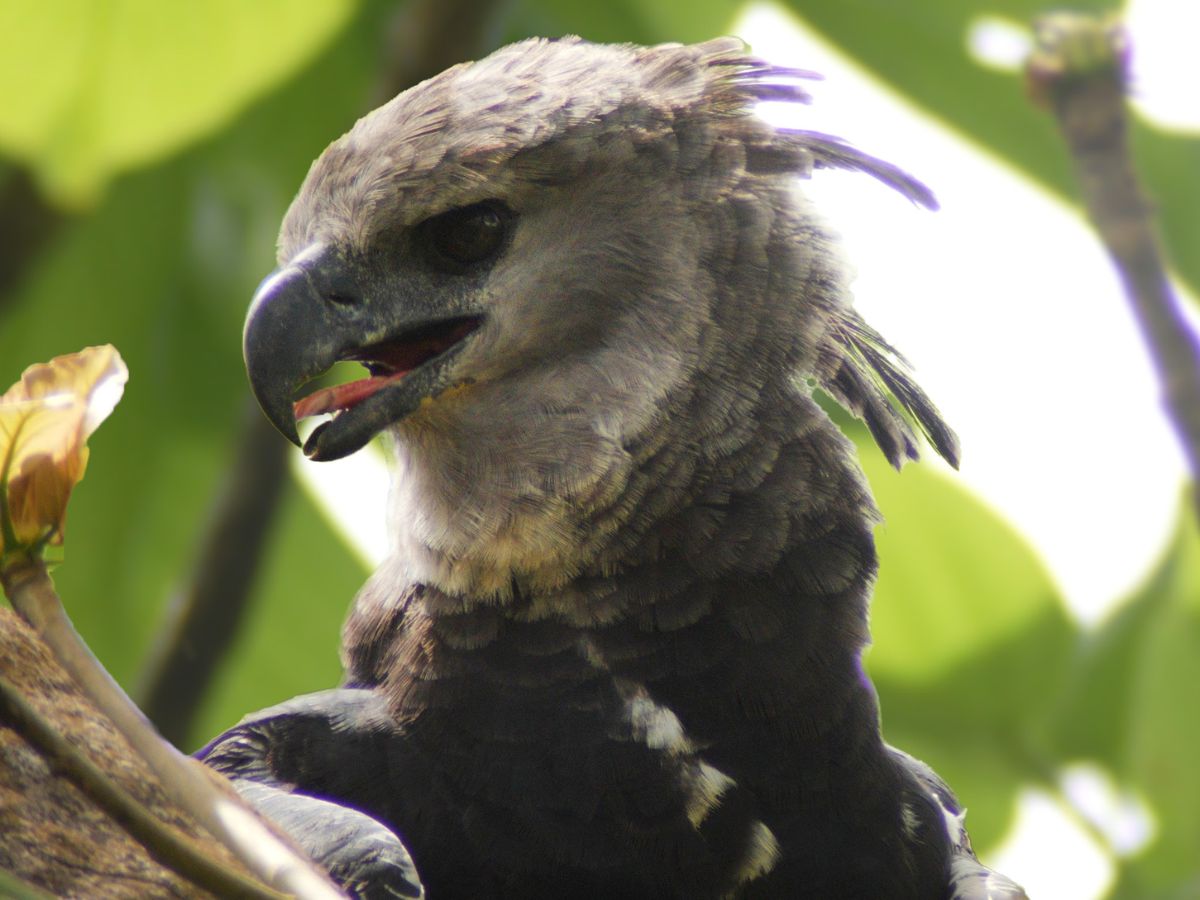
Panama’s national bird
The harpy eagle is the national bird of Panama and has been on my bucket list for some time. Named after the harpies of Greek mythology, gruesome women with the bodies of birds, this gigantic eagle is the most powerful raptor on earth and its rear talons can measure five inches – bigger than the claws of a grizzly bear.
A long journey to search for harpy eagles
To see it, I travelled from the UK to the Darién rainforest where I was a guest of Canopy Camp. This eco-lodge is located at the edge of this dense jungle and I had had been told that the guides there knew where there was a nest with a harpy eagle chick on it.
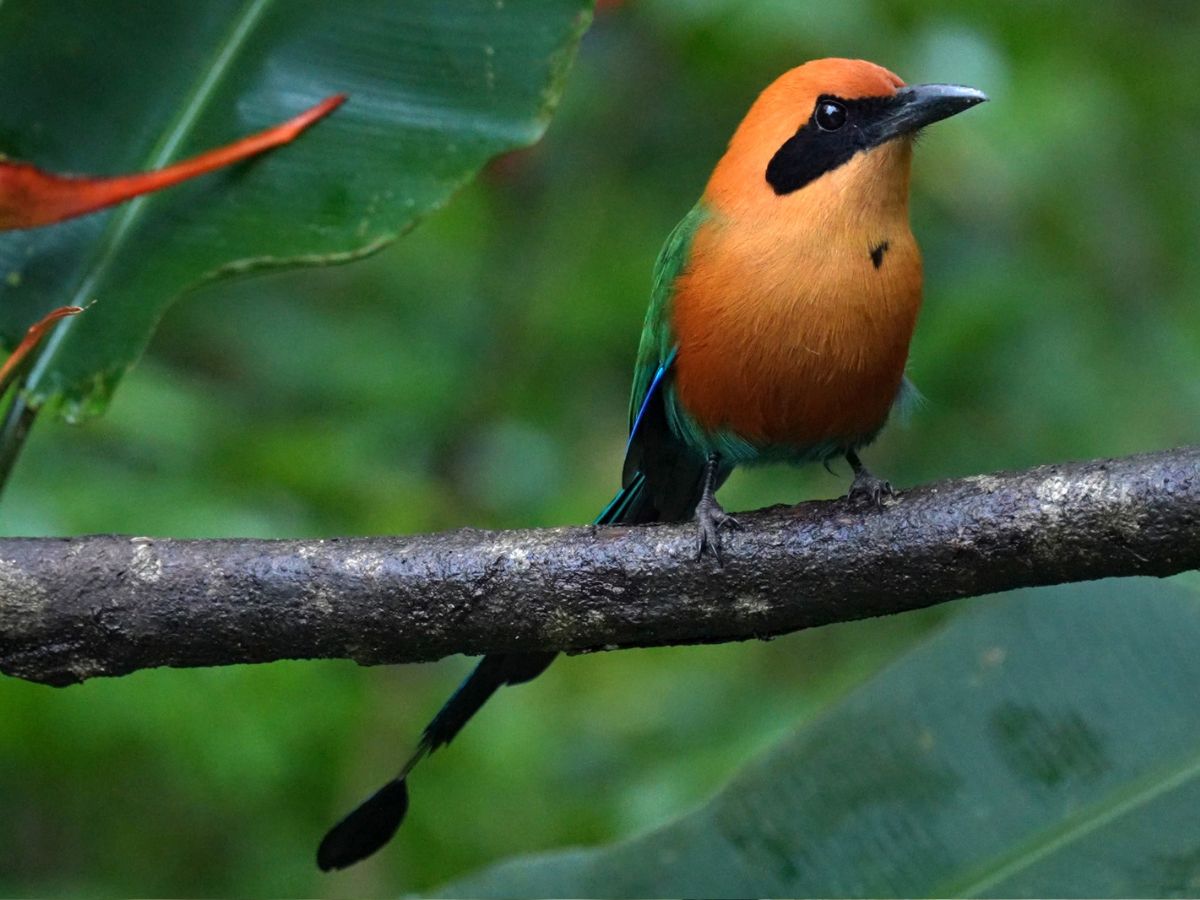
After my long journey I was eager to look for it straight away, but I couldn’t help but be distracted by the buzz of wildlife in the camp. Form the very top of the tree canopy right to the ground, the place teemed with brightly coloured birds and exotic animals.
Tourism is vital to Panama’s economy and the owners of Canopy Camp were keen to show off the sheer variety of wildlife this region has to offer. Hummingbirds flashed on bird feeders left out to attract them and troops of monkeys dashed about snatching up bananas from feeding stations. I spotted a movement through the dense undergrowth and moments later a band of white-nosed coatis appeared, their stripey tails held aloft as they foraged.

Then some white-faced capuchin monkeys came to the feeding area. I watched one grab as many bananas as it could and scurry away with one in its mouth, one in its hands and one tucked under its armpit. Further up in the trees on a long horizontal branch were a group of Geoffroy’s tamarins. Their high-pitched calls gave their location away they groomed one another in turn. Meanwhile all about were more brightly coloured birds than my brain could take in.
Journey to the Darien Gap
On my second day we set out to try to see the harpy eagle. We had a 40-minute drive down the Pan American Highway. This 30,000 km network of roads take you right across the Americas, from the very top of Alaska to Tierra del Fuego at the very tip of Argentina. 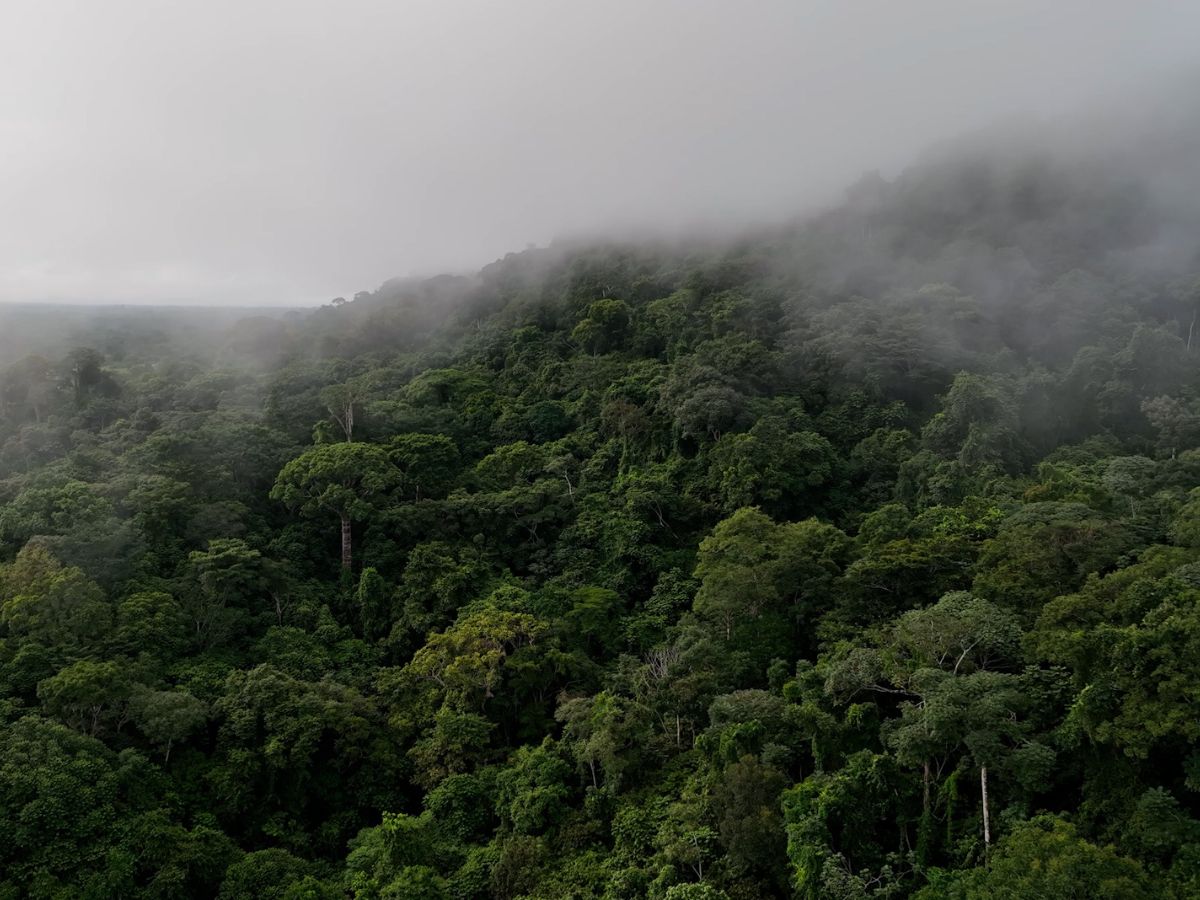
The road also forms Panama’s central highway since it travels along the length of this narrow country. But it stops 97kms before the Colombian border where a tight network of rivers, mountainous terrain and dense jungle vegetation is makes the region virtually impenetrable. Known as the Darién Gap, this region is one of the wildest places in the world and is only really traversable by boat. At the Chucunaque River, Panama’s longest, we swapped our car for a dugout canoe and headed downstream.

Traversing swamps on horseback
After 35 minutes we arrived at a farm and lifted our heavy camera equipment up a muddy bank before treading haphazard board walks to meet Mariano, the head of the González family who own La Escondida farm. Chickens and muscovy ducks ran at our feet and herds of cattle grazed the swampy land. There were no farm buildings, just a breezeblock house with a tin roof where the family lived. At the house we found a row of horses waiting for us. Mariano and his family are enormously proud of the fact that they have harpy eagles nesting on their land and were very keen to take us to see them.
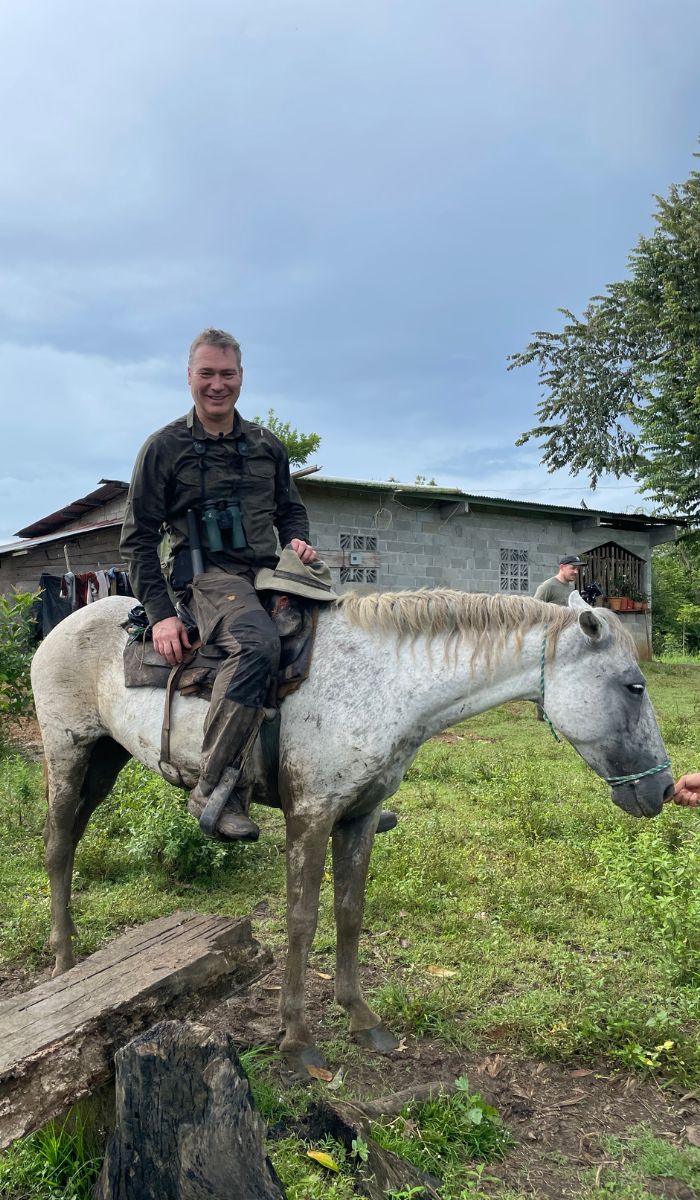
But the next stage of our journey was the most difficult. Huge, dark clouds were gathering above us, threatening to flood the already water-logged ground and make it even more difficult to traverse. But at this point in my journey nothing was going to stop me getting to the harpy eagle nest.
Dripping in sweat from the humidity, I got steadily wetter as I loaded my camera bags onto the waiting horses. I hadn’t been on a horse since I was a young boy, and I began to feel equally infantile when one of Mariano’s sons reached lead me and horse across the landscape. But it soon became obvious why we needed horses. The mud reached up to the animal’s knees and the men regularly lost their boots in the bog. Not only had I recently torn a ligament in my knee, but even if I hadn’t there was no way I could have carried my heavy camera equipment across this swampy land on foot.
First sighting of a harpy eagle
After an hour, the wet pastures gave way to trees and soon we were back in the forest. Here the forest was too dense for horses and so we continued on foot. I was getting hot and feeling saddle-sore by the time our guide, Eliecer, eventually pointed a finger to a small gap high in the tree canopy.
And there it was. A huge nest, resting in the fork of a cuipo tree. Cuipo trees are the largest trees of this region and measure up to 200ft high, towering over the top of the rest of the canopy. Everything in this forest seemed super-sized, and so when I spotted a female harpy eagle sitting inside the nest, it felt so surreal. Like coming across a mythical giant in an oversized land.
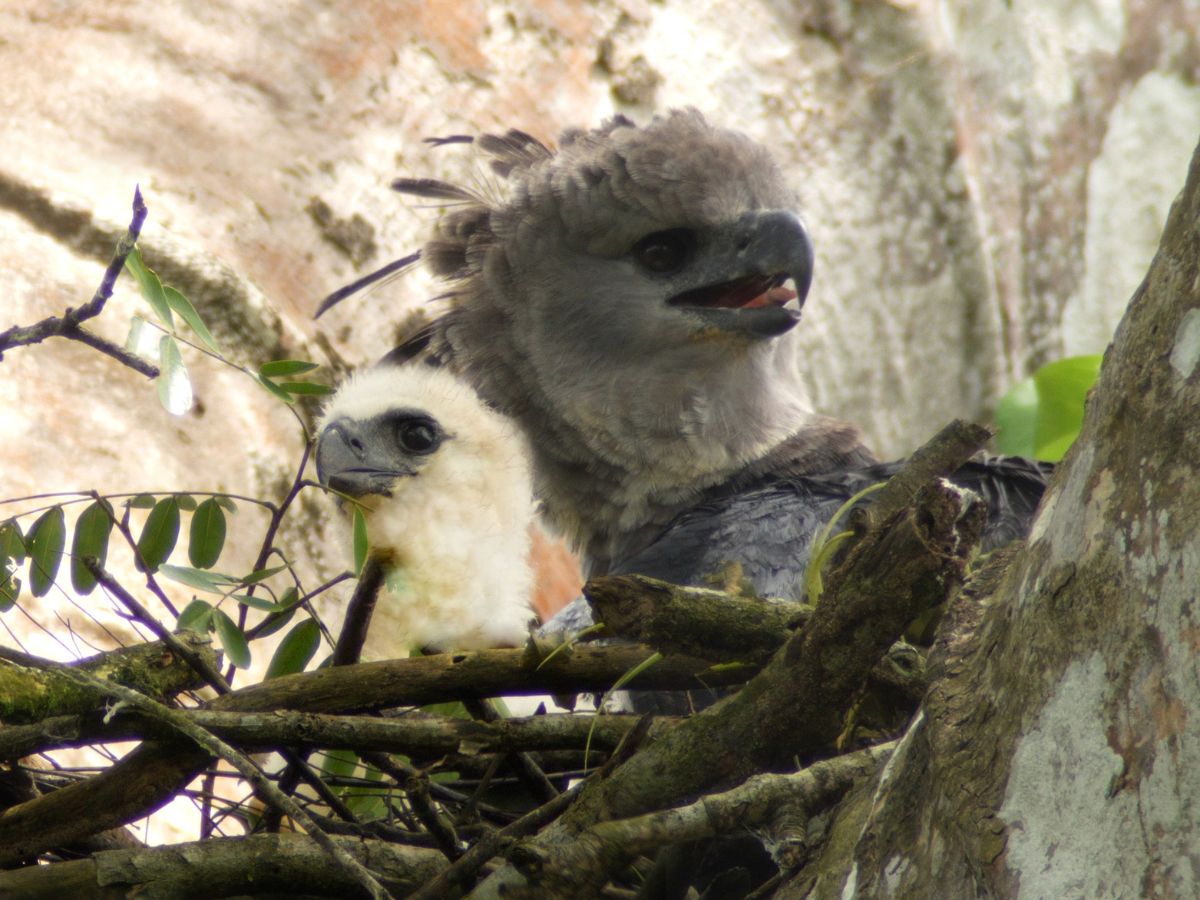
Harpy eagles are revered throughout the Americas
Here was the world’s most powerful bird of prey, just 60m away. As I scrambled to get my cameras, I couldn’t quite believe my eyes. The harpy eagle is so impressive it is revered across Central and South America. As I trained my lens on it, it called out, a long whistle that rang out across the forest.
Eliecer said the sound meant she was hungry and was calling for the male to bring food. And then a small white head appeared over the rim of the nest. A chick about one month old. The female leaned over it, her only chick, and for a moment she looked fiercely protective. Mesmerised, we watched her and her chick for a total of six hours, ignoring the humidity. Throughout, the female called again and again for food. Then she took flight, her huge two-metre wings at full spread as she headed off into the forest.
Waiting for a male harpy eagle
But she didn’t go far, and I could just see her in a nearby tree. She was tussling with something which made me think she was hunting, but then she arrived back with a branch and it seemed that she was just refreshing the nest with some greenery.
She did, however, seem hungry and kept searching the nest for food in vain. Males don’t bring food every day we were beginning to give up hope on seeing her mate at all when we heard the male finally return the female’s calls. Then all of a sudden, the male flew into the nest carrying prey. It was hard to see what he had brought as it filled his talons, but we watched the female take it from him and begin to feed it to the chick.
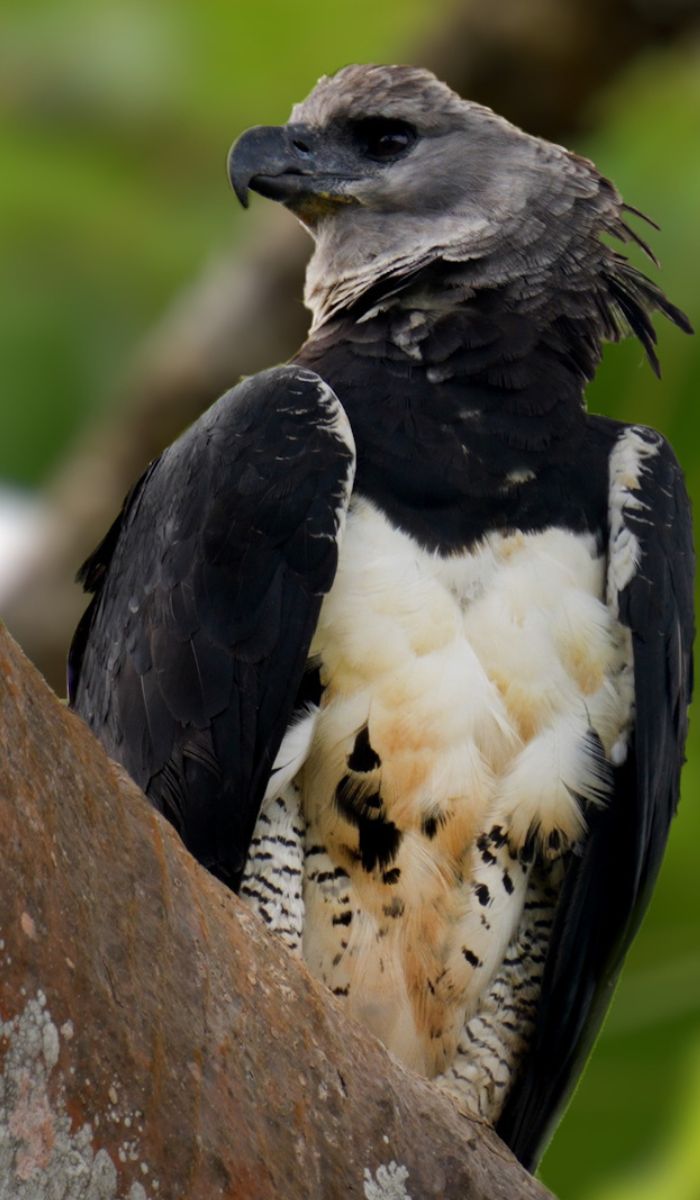
The male was smaller than the female. We watched him look around the nest before flying up to the branch above. He was there long enough for me to get some amazing footage of him and then he took flight, melting back into the forest.
Harpy eagle has almost mythical status
Although harpy eagles are incredibly strong- they regularly catch sloths and monkeys – their wingspan is somewhat smaller than that of, say a sea eagle, which makes sense because they live in dense forest where they need to be able to fly between trees. It was difficult to drag myself away but it was time to head back and so we set off to follow our journey in reverse: walking through the forest, riding on horseback across the swamp, canoeing down the river and finally back into the car.
As we re-joined the Pan-American Highway a rainstorm burst over our heads. But I barely noticed it as I thought about the incredible day I had had. Harpy eagles are so rare and elusive, I felt I had entered a fabled world and watched a mythological bird.
Robert Fuller was a guest of Canopy Tower (https://canopytower.com/). To experience a similar wildlife watching trip to Panama, he has teamed up with UK-based tour operator Wildfoot Travel to create bespoke wildlife and bird watching itineraries. For more information follow this link: https://www.robertefuller.com/travel/
[ad_2]
Source link

